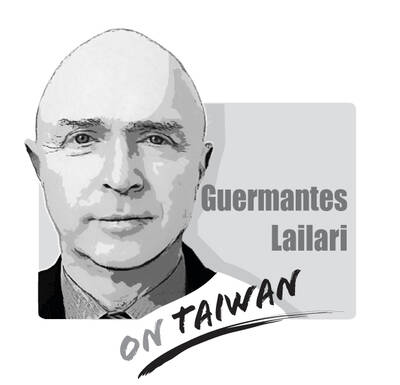As soon as the COVID-19 pandemic started to ease, air travel resumed. From January to last month, Taiwan Taoyuan International Airport recorded 28.24 million passengers, with the number of travelers reaching 69.5 percent of pre-pandemic levels.
In Asia, the commercial aircraft market size has also recovered, with Taiwanese companies having acquired new aircraft to meet the demand. The number of transit passengers is increasing and the government has offered measures to assist foreigners visiting Taiwan.
By the end of this year, the number of total passengers could reach 35 million and growth is set to continue. In 2026, passenger volume is projected to reach 54 million, which is 5 million more than the pre-pandemic level. To meet the demand, the airport must expand its space and service capacity.
First, even before the pandemic, more than 12 million travelers relied on the airport’s Terminals 1 and 2. Although these terminals went through reconstruction and expansion, the work is far from sufficient. The facilities that require more space, such as passport control areas and security checks, should be improved. The Arrival Hall at Terminal 2 has also not been upgraded. Travelers returning to or entering Taiwan still spend too much time waiting for clearance.
Second, today, more flights arrive at peak hours, with ever more transit passengers coming in. The baggage handling area in the basement is far from adequate. Passengers have to spend a long time waiting for their luggage. The operation area for handling baggage and the area’s circulation must be improved.
Third, the space for transit flights should be increased, and so should the service capacity for transit passengers. Nowadays, no security checks are required for transit passengers entering Taiwan directly from the US. This has mitigated the situation and enabled the airport to be less packed in the morning. However, the government might have to tighten security due to the situation in the Middle East. The airport must make adjustments as soon as possible.
Also, in recent years, the importance of border control cannot be over-emphasized. To prevent diseases and pests from entering Taiwan, inspection at the airport should be thoroughly carried out. Since the early stages of the spread of African swine fever, the Customs Administration has tightened border control measures. The inspection is done in a limited space in the immigration corridors. At busier times, this limited space would be even more congested — not a pleasant scene for the country’s gateway. Exclusive areas should be arranged for implementing border control, just like many other international airports.
Lastly, to accommodate the growing number of passengers, more workers should be hired by airline companies and airport agencies. Today, there is a shortage of accommodation facilities, work spaces, rest areas and parking spaces. Given that flights arriving and departing in the early morning or late at night are increasing, many employees commute by car. Reports from before the pandemic have already said that the airport should provide more parking spaces.
Thus, Terminal 1’s Departure Hall car parking lot and Terminal 2’s bus parking lot should be rebuilt with steel structures to create more space. Check-in counters and clearance facilities could be added so that passengers without checked bags, or who have already checked in, could enter and exit.
After the Terminal 2 bus parking lot is renovated, the parking lot for airport workers could be relocated to the upper floors. In doing so, more spaces would become available.
Wayne Chou is a former director of Chiang Kai-shek International Airport.
Translated by Emma Liu

“History does not repeat itself, but it rhymes” (attributed to Mark Twain). The USSR was the international bully during the Cold War as it sought to make the world safe for Soviet-style Communism. China is now the global bully as it applies economic power and invests in Mao’s (毛澤東) magic weapons (the People’s Liberation Army [PLA], the United Front Work Department, and the Chinese Communist Party [CCP]) to achieve world domination. Freedom-loving countries must respond to the People’s Republic of China (PRC), especially in the Indo-Pacific (IP), as resolutely as they did against the USSR. In 1954, the US and its allies
A response to my article (“Invite ‘will-bes,’ not has-beens,” Aug. 12, page 8) mischaracterizes my arguments, as well as a speech by former British prime minister Boris Johnson at the Ketagalan Forum in Taipei early last month. Tseng Yueh-ying (曾月英) in the response (“A misreading of Johnson’s speech,” Aug. 24, page 8) does not dispute that Johnson referred repeatedly to Taiwan as “a segment of the Chinese population,” but asserts that the phrase challenged Beijing by questioning whether parts of “the Chinese population” could be “differently Chinese.” This is essentially a confirmation of Beijing’s “one country, two systems” formulation, which says that
Indian Prime Minister Narendra Modi arrived in China yesterday, where he is to attend a summit of the Shanghai Cooperation Organization (SCO) with Chinese President Xi Jinping (習近平) and Russian President Vladimir Putin today. As this coincides with the 50 percent US tariff levied on Indian products, some Western news media have suggested that Modi is moving away from the US, and into the arms of China and Russia. Taiwan-Asia Exchange Foundation fellow Sana Hashmi in a Taipei Times article published yesterday titled “Myths around Modi’s China visit” said that those analyses have misrepresented India’s strategic calculations, and attempted to view
When Chinese President Xi Jinping (習近平) stood in front of the Potala Palace in Lhasa on Thursday last week, flanked by Chinese flags, synchronized schoolchildren and armed Chinese People’s Liberation Army (PLA) troops, he was not just celebrating the 60th anniversary of the establishment of the “Tibet Autonomous Region,” he was making a calculated declaration: Tibet is China. It always has been. Case closed. Except it has not. The case remains wide open — not just in the hearts of Tibetans, but in history records. For decades, Beijing has insisted that Tibet has “always been part of China.” It is a phrase